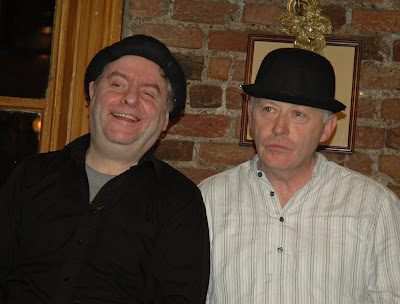Sometimes it’s what you don’t plan that is the best plan of all. That was how our days in Dublin went.
We started by walking up to St. Stephen’s Green and enjoyed the lovely park. Then we hopped on the Hop on, Hop off bus for a short ride to Dublin Castle.
This is where our day took off in a wonderful direction. We joined what we thought was a twenty-minute free history walk that was actually a three-hour free walk filled with history told with an Irish twist by our guide, Robbie.
Because of him we learned that there is no coach house behind the wall labeled “Coach House.” Instead the wall was built to protect Queen Victoria’s delicate eyes from the derelicts who lived nearby. We learned that the Dublin Castle is really a guest house for visiting dignitaries such as Presidents Obama and Clinton and others of high rank.
Leaving the Castle and passing the apartments where J. Swift (Gulliver’s Travels) lived and worked, we ventured passed Christ Church, one of the two “cathedrals” in greater Dublin.
We then wandered up Temple Bar (not a place for service of alcohol but a natural levee for the River Liffey). Robbie pointed out a plaque on Carlisle Bridge (the only bridge in the world wider that its length) in honor of poor dead Father Pat Noise, who never existed. Dubliners staged a protest when town leaders removed the plaque forcing its return.
Near the bridge is the Millenium Spire, the tallest spire in Europe, finished in 2003, a bit late for the celebration.
The Irish, with their gift of language, love rhymes and plays on words. Among the more acceptable nicknames for the spire are Stiletto in the Ghetto (it is on the poorer side of the river) and the Binge Syringe because of its cost. In front of the Spire is a statue to Daniel O’Connell, leader of the Catholic emancipation and a role model for Gandhi and M. L. King. We also wandered passed the Molly Malone's statue, otherwise known as the Tart with the Cart.
We then went to the campus of Trinity College, built in 1592 by Queen Elizabeth I to properly educate the Protestant minority who were being adversely affected by their exposure to Catholics. The school didn’t allow Catholics to attend until the 1700s. Legend has it that the bell of the Tower only rings if a virgin passes beneath and if anyone else walks under it, they will fail their exams.
After a brief respite to refresh with coffee and yummy scones, we continued along Temple Bar back to St. Stephen’s Green where we saw the horrific Famine Statue.
There we learned the Irish starved amid abundance. The crops they grew belonged to absentee British landlords. The Irish could only eat potatoes which were being destroyed by the blight so they starved while providing food for England. Their other alternative was to emigrate which vast numbers did though not without great risk during the voyage. This was one of the many stories of the wars between these two countries.
We were worn out from walking and settled into a corner of the Duke Pub where we were refreshed by Guinness (men) and water (women). Then most of us dug into the traditional fish and chips followed by apple crumble with ice cream.
This dinner prepared us to join the Literary Pub Crawl. Actors Derek and Colum led us on an oratory journey around the downtown area. They enacted scenes from Samuel Becket (Waiting for Godot), Oscar Wilde, Brandon Behan and other great writers.
Ireland has had four Nobel Laureates for literature (can you name them?)
There was a quiz following the tour and Sandy won second prize.
We continued our history lesson in the morning with a tour of the Kilmainham Gaol, both a traditional and political prison. Men, women and children, imprisoned for crimes ranging from murder to stealing a loaf of bread, were kept in silent isolation until the famine when the cells overflowed with starving people seeking prison as a way to get some food.
Anna Lee and Lois even tried on a cell for size.
Political prisoners filled their own section of the prison following the 1916 Easter Rising. Sixteen rebels were executed following the failure of the fifth attempt to gain independence. After these executions Irish leaders did sign a treaty with England giving 26 counties independence; the other counties (with a large Protestant population) became Northern Ireland.
After the gaol, we took a brief run-through of the archeological museum to see the Viking display. As museum lovers, this quick visit was very frustrating, we hope to find time later to go back.
In the evening we gathered to meet the rest of our tour group in preparation for our five-day drive around Ireland. A large part of the group is from New Jersey, much to Sandy and Lois’ delight. We celebrated our great day in Dublin (sunshine!) with a return visit to Sussex Restaurant where we toasted our trip with another chocolate pannecotta and a wonderful Figgy Sticky Toffee Pudding.















No comments:
Post a Comment